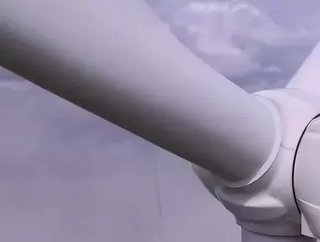Siemens Gamesa UK manufacturing facility to double in size

Siemens Gamesa will expand its offshore blade factory in Hull, England by 41,600 square metres, more than doubling the size of the manufacturing facilities. The expansion represents an investment of £186 million and is planned to be completed in 2023.
Manufacturing of next-generation offshore wind turbine blades will be enabled at the largest offshore wind manufacturing facility in the UK. It will grow to 77,600 square metres and add 200 additional direct jobs to the approximately 1,000 person-workforce already in place.
“Since our offshore blade factory opened in Hull in 2016, Siemens Gamesa has proudly served as the catalyst for the powerful growth the area has seen. The rapid development of the offshore wind industry – and continued, strong, long-term support provided by the UK government for offshore wind – has enabled us to power ahead with confidence when making these plans. We’re committed to unlocking the potential of wind energy around the globe, with solutions from Hull playing a vital role,” said Marc Becker, CEO of the Siemens Gamesa Offshore Business Unit.
He added over 1,500 blades from Hull have been delivered to customers worldwide and it was looking forward to adding to this capacity in future.
Manufacturing of other offshore wind turbine blade types already in the Siemens Gamesa Hull factory pipeline will continue while the expansion is constructed. In total, Siemens Gamesa has an offshore wind power order backlog of €9.4 billion as announced during its Q3 FY21 results presentation on July 30.
Clark MacFarlane, Managing Director of Siemens Gamesa UK said: “The UK Government has provided strong and consistent support for offshore wind, having committed to a further 30 GW installed this decade, three times the current installed capacity. This underlines the commitment the UK Government has made since the Offshore Sector Deal was unveiled in early 2019.”
Last week Siemens Gamesa announced it will supply 39 of its SG 5.8-170 turbines to two sites totalling 242 MW in Sweden dubbed the ‘Twin Peaks’.
The turbines will be split between 25 at the Ranasjö site and 14 at the Salsjö location, both around 15km apart in central Sweden. They are due to be commissioned by the first quarter of 2024 and will be covered by a service agreement of 30 years. The turbines will have a nominal capacity of 6.2 MW and are among the most competitive in the onshore industry, powered in this case by a 170-metre rotor.
The company completed a "challenging" Q3 with a backlog worth €32.6bn (+3% y/y), €1.1bn more than a year earlier but added it is well placed to capture the potential of the wind industry, driven by an increase in decarbonisation commitments and the role of renewable energy in economic recovery programs.
Its performance in the quarter reflected the impact on backlog profitability of rising commodity prices and the higher-than-expected ramp-up costs for the 5.X platform. That impact, exacerbated by the pandemic, especially in Brazil, resulted in a provision for onerous contracts related to projects to be executed in FY22 and FY23.
Siemens Gamesa adjusted its guidance for financial year 2021 with an EBIT margin pre-PPA and before Integration and Restructuring (I&R) costs in the range of -1% to 0%, and group revenue expected to be at the low end of the range announced during the presentation of results for the second quarter (April 30) at €10.2bn to €10.5bn.






